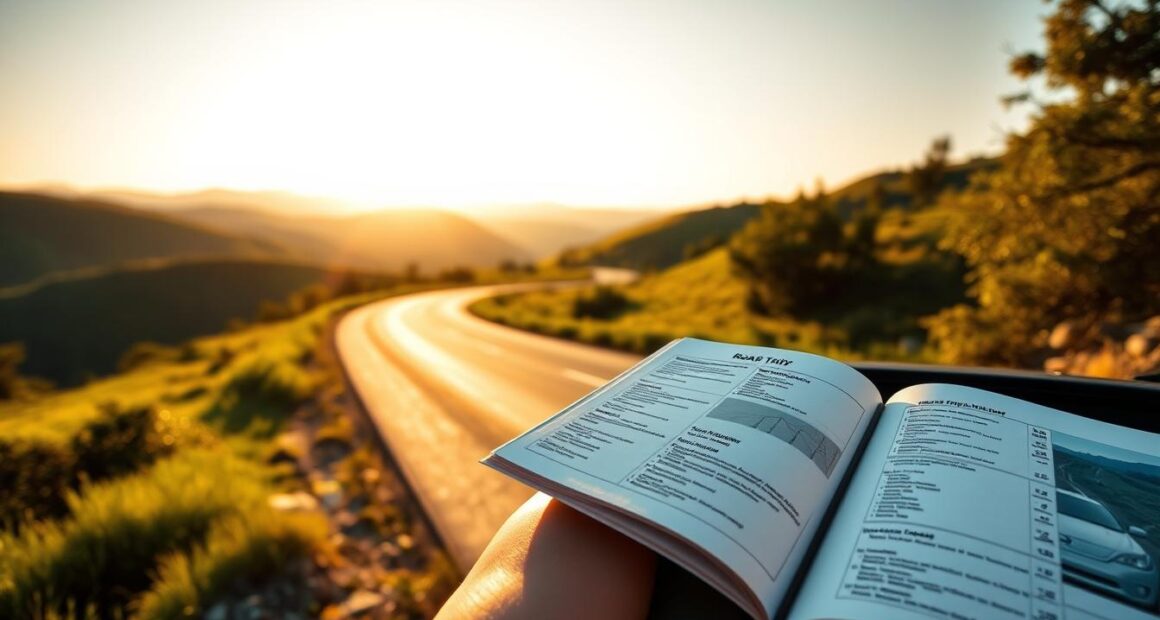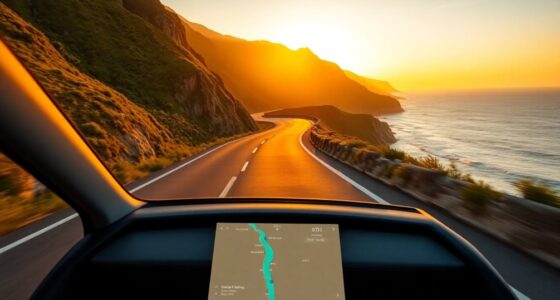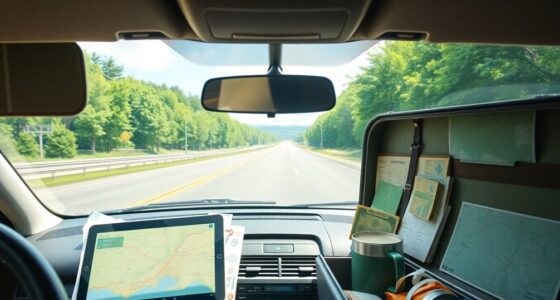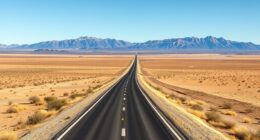Have you ever felt the rush of freedom that comes from hitting the open road? The anticipation of adventure, the laughter of friends, the joy of discovering new places that are just waiting to be explored. A well-thought-out road trip itinerary not only brings these dreams to life but also ensures that every mile traveled becomes part of a cherished memory. In this guide, you’ll uncover expert tips to create the ultimate road trip planner, allowing you to craft an experience tailored to your desires and preferences. Whether you’re planning a week-long escape or a spontaneous weekend getaway, this roadmap to adventure will help you find the perfect balance between meticulous planning and the spontaneity that comes with travel. As you embark on this journey, remember that the right resources can elevate your experience even further. With perfect road trip planner tools at your disposal, you’ll gain insights into the best routes, must-see attractions, and hidden gems off the beaten path. So buckle up and get ready to embrace the thrill of exploration, knowing you have everything you need to make this adventure unforgettable.
Understanding the importance of a road trip itinerary will not only enhance your travel experience but also empower you to embark on journeys filled with excitement, spontaneity, and unforgettable memories.
Key Takeaways
- Planning a road trip itinerary is essential for maximizing your travel experience.
- Flexibility is key; a good plan allows for spontaneity while ensuring you see your must-see sights.
- Using tools like Furkot can help with route planning and accommodation previews for a seamless journey1.
- Consider utilizing platforms like Roadtrippers to explore millions of trip ideas and user-generated routes2.
- Pack thoughtfully to ensure comfort and readiness for all the adventures ahead!
Why You Need a Road Trip Itinerary
Embarking on a road trip can be an adventure like no other. Crafting a road trip itinerary not only adds structure to your travel planning but also allows for a richer experience as you journey through scenic landscapes and exciting stops.
Benefits of Planning Ahead
Planning ahead offers numerous advantages. You can identify key stops and attractions along your route, which enhances your travel experience significantly. For example, did you know that road trips can facilitate exploration of over 100 important civil rights landmarks across 15 Southern states? By mapping these locations in advance, you can ensure you don’t miss out on historical treasures that tell the story of America’s past3. With Google Maps, you can add up to 10,000 places of interest when signed in, making it simpler to organize your journey and take note of the best road trip routes that speak to your interests3.
How It Enhances Your Experience
A well-structured itinerary encourages spontaneity while ensuring you’ll experience all the highlights. For instance, traveling via personal vehicle allows for impromptu stops that create lasting memories. Unlike traditional tours that can incur thousands of dollars in fees, road trips can be cost-effective, especially with current gas prices at historic lows4. Moreover, this flexibility in travel, such as camping one night and staying at a farmhouse the next, enriches the trip and makes it a personalized journey4.
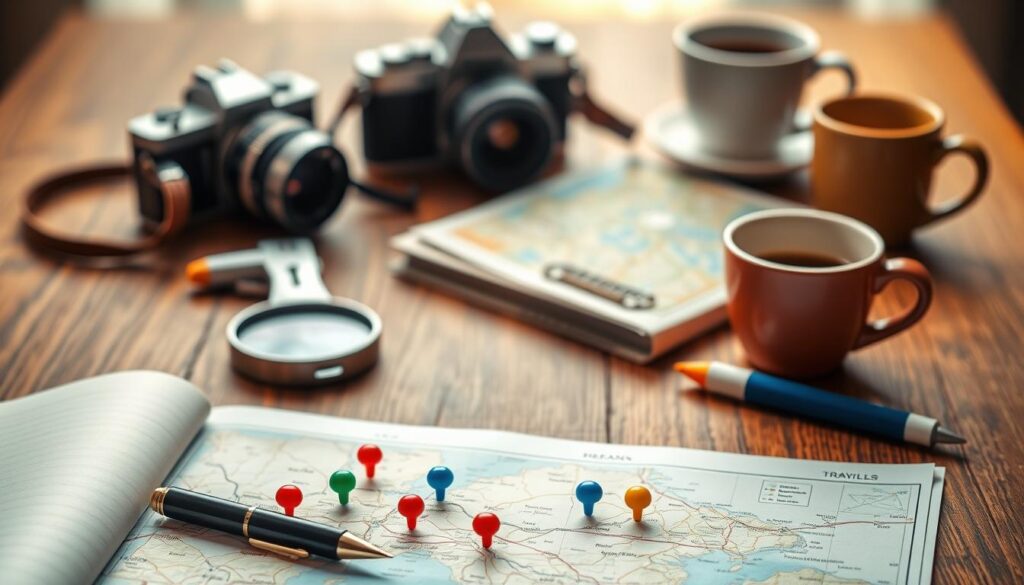
| Planning Focus | Benefits |
|---|---|
| Key Stops | Explore historical landmarks and local attractions |
| Budget Control | Road trips often reduce travel expenses significantly |
| Flexibility | Encourages spontaneous exploration and unique experiences |
| Shared Experiences | Builds stronger connections and lasting memories |
With these advantages in mind, it’s clear that a thoughtful road trip itinerary not only streamlines travel planning but also turns your journey into a memorable adventure34.
Choosing Your Destination
The first step in your road trip itinerary is to choose your destinations. Popular routes provide a good starting point, offering both adventure and stunning landscapes. Consider some iconic journeys that have captivated travelers for decades.
Popular U.S. Road Trip Routes
Routes like the Pacific Coast Highway and Route 66 are well-known road trip destinations. These routes offer breathtaking views and historical stops that create lasting memories. However, you might also want to explore some lesser-known paths that hold their own unique beauty.
Hidden Gems to Explore
For those seeking something different, consider the Blue Ridge Parkway or Scenic Byway 12 in Utah. These hidden gems not only provide awe-inspiring nature but also invite you to discover quaint towns and local attractions. Research these scenic drives to find points of interest, including national parks and picturesque overlooks. Remember, planning a trip involving multiple destinations requires thoughtful consideration, as the distance from Sainte-Anne-des-Monts on the Gaspé Peninsula to Toronto is 1,267 kilometers, and it is suggested to spend an average of three days at each destination to fully experience your surroundings5.
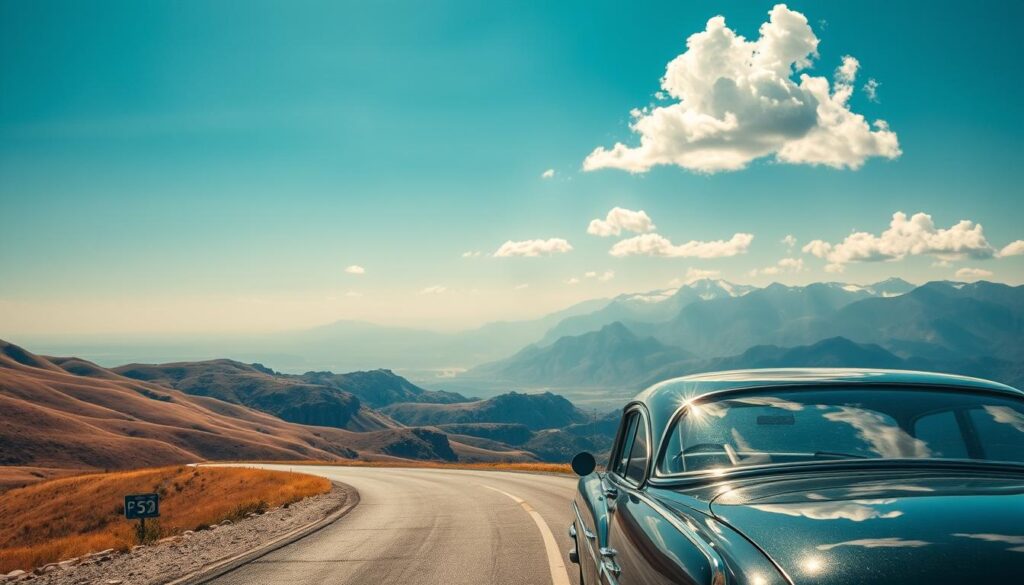
Planning Your Route
Effective travel planning can make a significant difference in your road trip experience. You can optimize your journey by using tools like Google Maps that allow you to create a personalized road trip map. This enables you to organize your itinerary by day or type of activity, ensuring a smooth navigation experience as you explore various destinations. Each Google Maps custom map can support up to 2,000 separate pins, making it easy to mark essential stops along the way6. You can also add a maximum of 10 layers to your custom map, helping you categorize locations effectively6.
How to Use Road Maps and GPS
Utilizing modern GPS applications is vital for successfully navigating road trips. Google Maps offers seamless access to reviews and additional location data across both its app and desktop versions, enhancing your planning process6. You can generate routes for various transportation methods, such as walking, driving, public transit, or taxis, giving you the flexibility to choose what works best for your trip6. Additionally, it’s advisable to access your Google Maps itinerary from mobile devices by navigating to “Saved” and then “Maps” within the app for convenience on the go.
Tips for Avoiding Traffic
Traffic can significantly interfere with your travel experience. To avoid congestion, plan your travel schedule around peak traffic times, especially when transiting through major cities. Apps providing real-time traffic updates can be beneficial in making informed decisions about the best routes to take. AAA recommends making regular stops every two hours or 100 miles to stay alert, which can help you avoid driving fatigue7. Additionally, always check three key vehicle components: battery, engine, and tires, to reduce the risk of roadside emergencies, ensuring that your trip is as smooth as possible7.
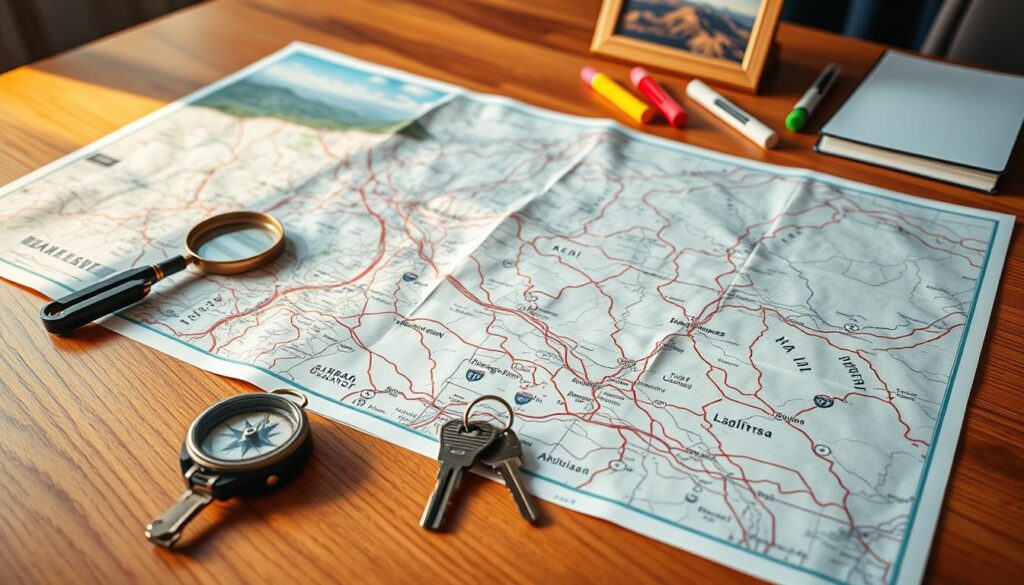
Budgeting for Your Road Trip
Embarking on a successful budget road trip hinges on understanding your costs upfront. A comprehensive strategy for estimating expenses can save you from unexpected financial strains. Here’s how to break down some of the essential components of your travel budget.
Estimating Fuel Costs
Fuel expenses often represent one of the largest costs during a road trip. To estimate fuel costs accurately, use the formula based on total distance, vehicle fuel efficiency, and fuel price per gallon. For example, if your vehicle gets 25 miles per gallon, and you plan to drive 2,000 miles, you can estimate your fuel costs by calculating the number of gallons needed: 2,000 miles divided by 25 miles per gallon equals 80 gallons. At a gas price of $3 per gallon, your total fuel cost would be $24089. Understanding how to read your vehicle’s mileage and preparing for fuel stops will help you have a clearer vision of your budget.
Accommodation Expenses
Accommodation can significantly impact your overall road trip budget. The average hotel room cost in metro areas tends to be around $100 per night, while in the heartland, it can drop to approximately $509. However, opting for campgrounds, which typically charge between $25 to $50 per night, can lead to substantial savings10. Booking your accommodations in advance can also make a difference, especially during peak travel seasons. Consider alternatives like couchsurfing to further reduce costs, which can transform your journey into a more adventurous experience.
Dining and Activity Budgets
Food costs are another significant part of your budget. On average, you might spend about $25 per person per day9. To keep dining expenses in check, plan your meals ahead of time. Preparing most of your meals can lead to considerable savings compared to eating out frequently. Shopping at local grocery stores for snacks and drinks before your trip can minimize the temptation to stop at convenience stores where prices tend to be higher810. Lastly, setting a daily food budget helps you manage your spending while still enjoying local cuisine.
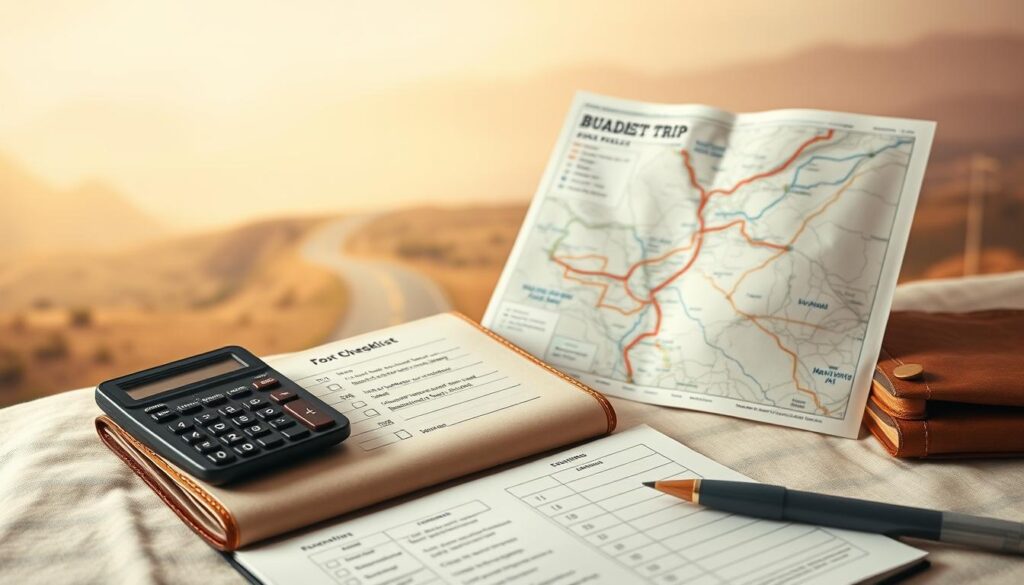
Ultimately, incorporating these strategies into your road trip checklist will help you plan and execute your journey while staying within budget8910.
Accommodation Options
One of the key elements of travel planning involves securing suitable road trip accommodation. From budget-friendly lodging options to more unique stays, your choices can significantly affect your experience. This section delves into various accommodation types, guiding you in making informed decisions for a memorable journey.
Camping vs. Hotels
Camping offers a wonderful opportunity to connect with nature on your road trip. Depending on the campsite, costs typically range between $10-$30 per night, making it an economical choice. You can enjoy the great outdoors while saving on lodging expenses. Alternatively, hotels provide comfort and amenities that may be worth the extra cost. For instance, budget hotels like Motel 6 or Super 8 usually start around $50 per night. When considering the total spent on accommodations during a recent trip, it amounted to $1,036.36, which contributes to the overall budget of around $6,262.67 for 116 days of travel11.
Unique Places to Stay
Exploring unique lodging options can enhance your experience on the road. Think about trying out glamping sites, cabins, or friendly motels that offer a more personal touch. Additionally, platforms like VRBO allow booking accommodations that suit diverse preferences, while Couchsurfing provides a chance to stay with locals for free. This can further help you save on lodging if you’re looking to maintain a budget. Remember, your choice of accommodation can also affect the overall travel budget, making it crucial to plan wisely based on your route and amenities available.
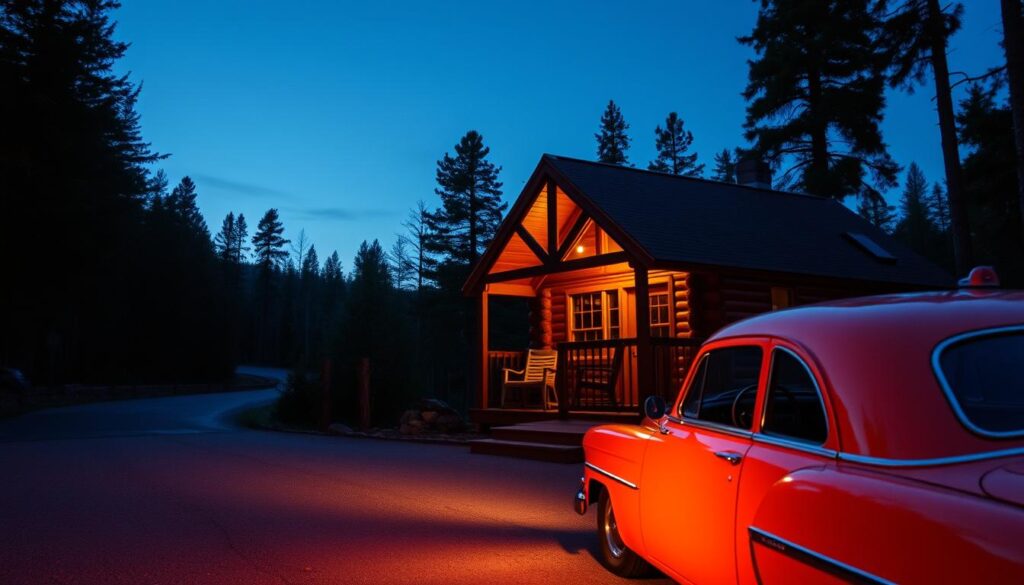
From camping to hotels, your road trip accommodation choices greatly influence your adventure. Understanding these options helps you maximize your experience while staying within budget12.
Packing Essentials for Your Trip
Packing efficiently is a crucial part of any road trip adventure. Preparing a comprehensive packing checklist can ensure that you have all your road trip essentials covered. Remember to consider versatile road trip gear that keeps you comfortable while catering to various needs.
Must-Have Gear for Road Trips
When it comes to gear, prioritize items that enhance your travel experience. A reliable suitcase or a spacious backpack, like the Borealis with a 28L capacity, acts as both a weekend pack and daypack, making it perfect for spontaneous hikes13. Don’t forget essential documents such as your license and insurance, ensuring you have the necessary paperwork easily accessible14. A first aid kit is a must-have too, with 85% of road trippers considering it vital, especially for outdoor enthusiasts15.
Food and Snacks to Bring
Packing your own snacks provides a healthier alternative while traveling. Having a cooler can make a significant difference, as 65% of road trippers report enjoying their trips more with healthy options on hand15. A mix of nutritious snacks can curb cravings and reduce the need for fast food stops. In fact, 75% of travelers state that bringing healthy snacks decreases the urge to buy unhealthy options while on the road15. Don’t overlook the importance of water; keeping a portable jug allows you to stay hydrated without making unnecessary stops15.
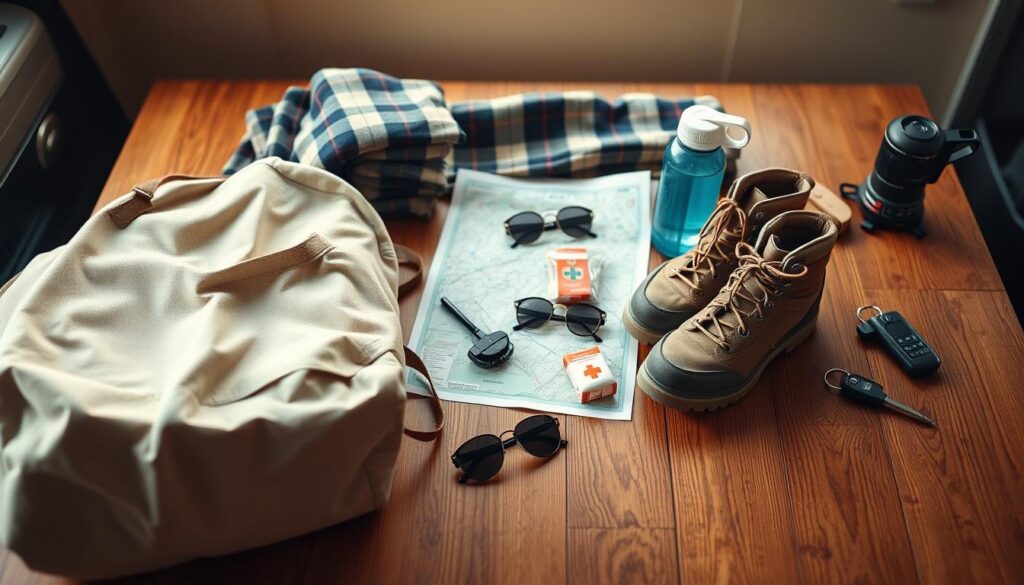
Entertainment on the Road
Long drives can feel unending without engaging entertainment. You have numerous options available to make your journey memorable and enjoyable. Whether you prefer music playlists or the intriguing world of road trip podcasts, mixing various entertainment forms can enhance your travel experience.
Best Road Trip Playlists
Create vibrant music playlists filled with your favorite tracks. Streaming music apps offer a stunning variety of ready-made playlists, perfect for road trip entertainment16. Listening to music can elevate your mood and keep you energized during long stretches of driving. Some family-friendly favorites include classic hits and upbeat pop songs that everyone can enjoy together.
Audiobooks and Podcasts
Consider diving into the captivating realm of audiobooks and podcasts for a memorable experience on the road. Audiobooks can provide up to 11 hours of entertainment on a long road trip16. Podcasts have surged in popularity recently, addressing a range of interests from true crime to self-help17. Many favorite podcasts can help keep both you and your passengers engaged, ensuring the trip flies by. You can also incorporate language learning apps for a fun way to learn while traveling, enriching your experience17.
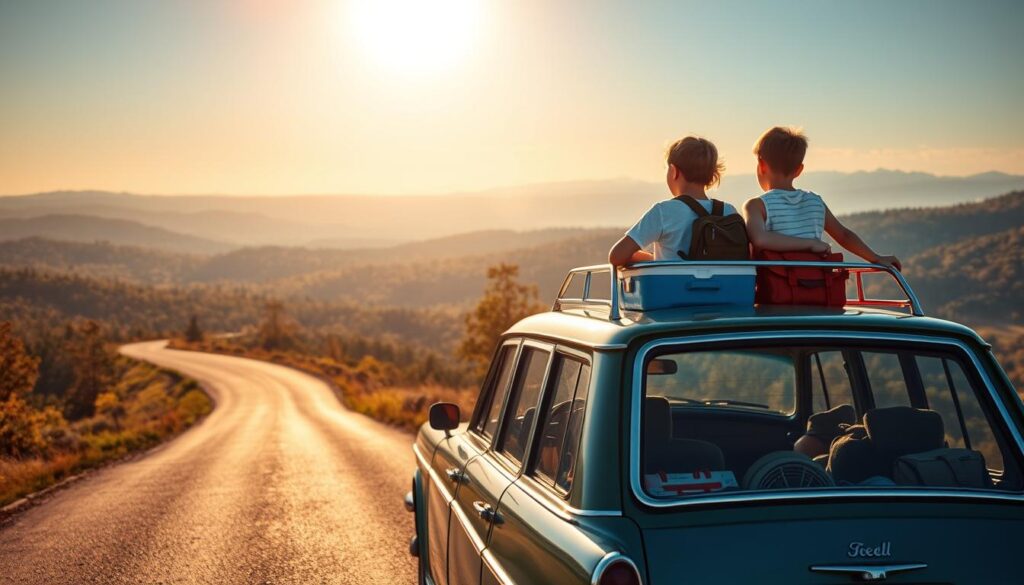
Engaging Activities
Diversifying your entertainment options encourages interaction among travelers. One popular road trip game involves spotting state license plates, which can turn into a fun competition and alleviate boredom17. Additionally, bringing along creative options like Mad Libs books can provide hours of enjoyment16. You may also consider incorporating educational apps for children, making learning a part of your adventure.
| Entertainment Type | Average Duration | Popularity |
|---|---|---|
| Audiobooks | Up to 11 hours | Marquee option for engaging stories |
| Podcasts | Variable, typically 30-60 minutes | 70% of travelers listen during trips18 |
| Music Playlists | Variable | Essential road trip entertainment choice |
| Games & Activities | Duration varies | 44% of families engage in games |
Incorporating a mix of music playlists, road trip podcasts, and engaging activities provides an enjoyable atmosphere, improving the overall travel experience. Feel free to explore creative formats for well-rounded road trip entertainment18!
Safety Tips for Your Journey
Ensuring road trip safety is paramount for a smooth travel experience. Before you set off, thorough vehicle checks can significantly reduce the risk of breakdowns. Regular maintenance checks focusing on fluid levels, brakes, and tire conditions are crucial for safety19. Conducting these vehicle checks can make a difference in how your journey unfolds.
Vehicle Maintenance Before You Go
Maintaining your vehicle is about more than just oil changes; it’s a critical step in preparing for your adventure. Start by verifying your tire pressure and checking fluid levels. Don’t forget to inspect your brakes for optimal performance. For added peace of mind, AAA members can enjoy a complimentary vehicle maintenance inspection valued at $50 when attending AAA Approved Auto Repair facilities20. Having an emergency roadside kit is also advisable, as vehicle breakdowns can happen in about 15% of long road trips21.
Emergency Preparedness
Emergency preparedness plays an essential role in ensuring peace of mind during your travels. An essential emergency kit should include items such as jumper cables, flashlight with extra batteries, a first aid kit, and basic tools19. Being equipped with a first aid kit and emergency supplies like drinking water and nonperishable food can be lifesaving20. Additionally, downloading the AAA Mobile app grants you access to resources for planning road trips and requesting roadside assistance should you need it20. Remember, 70% of pet owners report traveling with their pets, which makes it even more critical to prepare properly20.
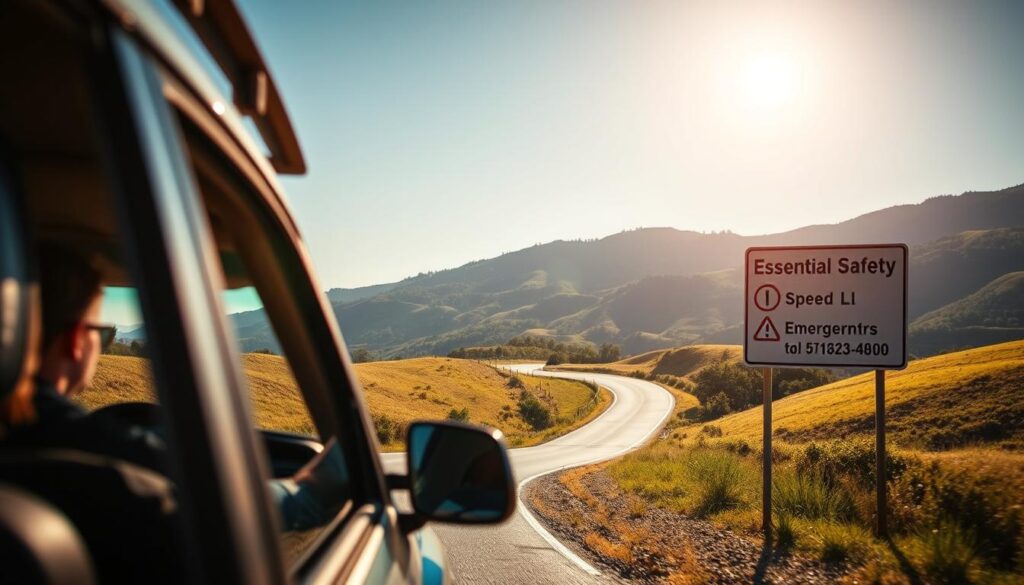
Important Road Trip Apps
Utilizing the right road trip applications can significantly enhance your journey by ensuring seamless travel organizing. Various tools are available to simplify your experience, from navigation to budgeting, allowing you to focus on enjoying the adventure ahead.
Navigation and Mapping Tools
When it comes to navigation, apps like Google Maps are highly recommended for real-time traffic updates and route suggestions22. Waze is another favorite, enabling users to share real-time road conditions, which improves interactive trip planning22. For dedicated road trips, Roadtrippers shines with its ability to show multiple options for activities, restaurants, and stops based on your entered locations22. It also uses data from over 38 million trips to assist in effective trip planning and integrates user-friendly features like RV-friendly GPS navigation and offline maps23.
Budgeting and Expense Tracking
Managing expenses is crucial on any road trip. Apps like GasBuddy harness crowdsourced data to provide real-time information on fuel prices, ensuring budget-efficient fueling22. Additionally, Road Trip Budget Tracker helps monitor your overall expenses with ease23. Users can manage their trip budgets and track expenses directly within Wanderlog, an entirely free app designed for road trip planning that allows unlimited stops to be added24. With budgeting tools integrated into these travel organizing tools, you will remain informed and ready for any financial surprises that may arise during your journey.

Making the Most of Your Stops
Your road trip isn’t just about getting to the destination; the journey is equally essential. As you plan your route, finding the right balance between sightseeing and driving time is crucial. You will want to allocate ample time for exploring local attractions, taking scenic overlooks, and enjoying dining on the road that showcases regional flavors. This balanced approach allows you to relish every moment and creates lasting memories.
Sightseeing vs. Driving Time
During your travels, it’s important to remember that the average daily travel duration for most people on a road trip is between 12 to 14 hours, although to truly enjoy the experience, ideal maximum driving time should be around 6 hours per day25. This way, you can comfortably enjoy road trip stops that feature must-see attractions while still making it to your next accommodation without feeling rushed. Be flexible with your itinerary to accommodate any spontaneous must-visit spots that might draw your attention.
Local Cuisine to Try
Dining on the road can significantly enhance your overall trip experience. Consider exploring local eateries or hidden gems that offer food representative of the region you’re traveling through. Meals can impact your road trip budget dramatically, as some dining options might exceed typical grocery prices25. It’s beneficial to research average meal costs in various states and plan your stops accordingly, allowing for a delightful experience while keeping an eye on expenses. By sampling local cuisine, you’re not just filling your stomach; you’re discovering the essence of the places you visit.
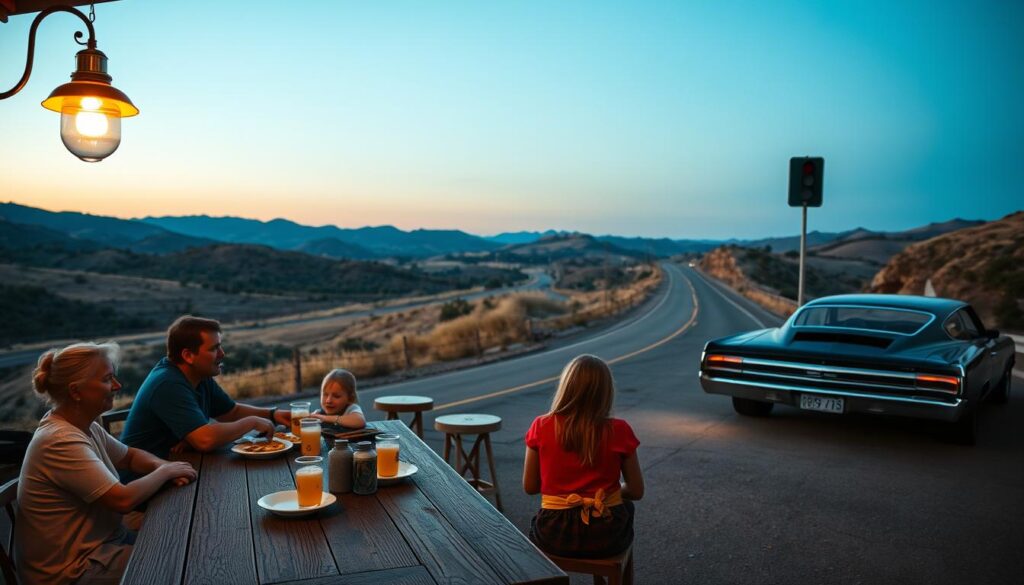
| Type of Stop | Activities | Estimated Costs |
|---|---|---|
| Local Attractions | Sightseeing, Museums, Parks | ~$100 per ticket (may rise to $125)25 |
| Outdoor Stops | National Parks, Scenic Views | Varies based on location |
| Dining | Local Restaurants, Food Trucks | $4 for a bottle of water; $8 for a pint of beer25 |
Incorporating a mix of leisure and exploration into your itinerary ultimately ensures a rich and fulfilling road trip experience.
Capturing Your Road Trip Memories
Documenting your adventures is an enriching way to relive the wonderful memories of your road trip. With the right photography techniques, you can create breathtaking images that capture the landscapes and candid moments along your journey. Research shows that 75% of travelers consider photography a crucial part of their travel experience, highlighting its significance in preserving road trip memories26. Combine this with the fact that 70% of travelers maintain a travel journal, and you’ve got a powerful tool for fostering enjoyment and emotional recall26.
Photography Tips for Travelers
As you embark on your road trip, focus on capturing not just the sights but also the feelings and experiences that make each moment memorable. Use natural light for striking photos, and experiment with angles to add depth to your shots. Emotional storytelling in your photos is more impactful than merely posing; 88% of travelers agree that including multimedia elements enhances their journaling experience26 and keeps the adventure alive long after you’ve returned home.
Creating a Travel Journal
Consider keeping a travel journal to jot down experiences, thoughts, and the people you meet. It’s reported that 42% of individuals find that journaling significantly enhances their travel enjoyment and helps with memory retention27. You can express your creative side by incorporating sketches or scrapbooking elements, as the market for this nostalgic method is growing at 12% annually26. By revisiting your journal later, you can reflect on personal growth and the changing nature of your travel habits, which 50% of people do27. With magical memories captured through writing and photography, your road trip can transform into a cherished story of exploration.
